Have you ever walked into a space and felt an overwhelming sense of peace and balance? That’s the magic of Japanese kitchen design. It elegantly combines simplicity with functionality, creating a sanctuary within your home. Inspired by nature and traditional values, a Japanese kitchen is an invitation to a slower, more intentional way of living. Delve into this article to discover the art of crafting a modern Japanese kitchen that not only meets your practical needs but also transforms your culinary space into a realm of tranquility and style.
Zen At The Center
Imagine a kitchen where every culinary journey starts from a place of calm. The centerpiece of a minimalist Japanese kitchen often embraces a Zen garden, a bit of nature right in your home. Utilizing natural materials such as bamboo and stone, this design element fosters a tranquil environment and adds a dimension of harmony and simplicity to your everyday routine.
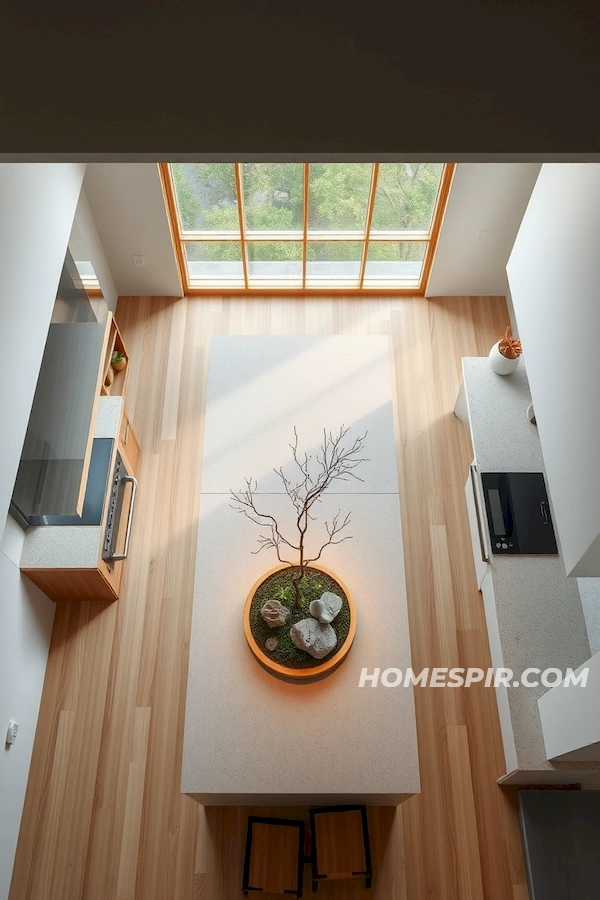
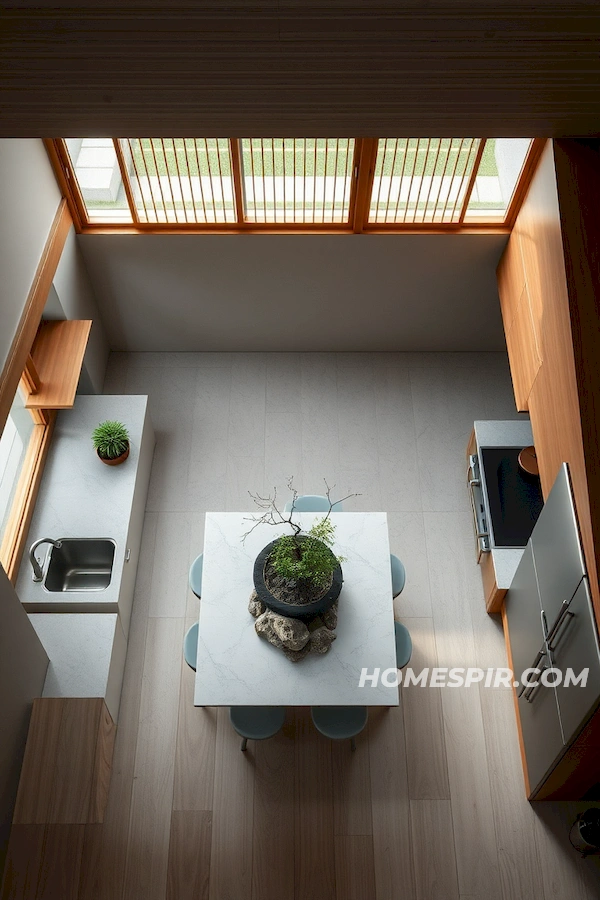
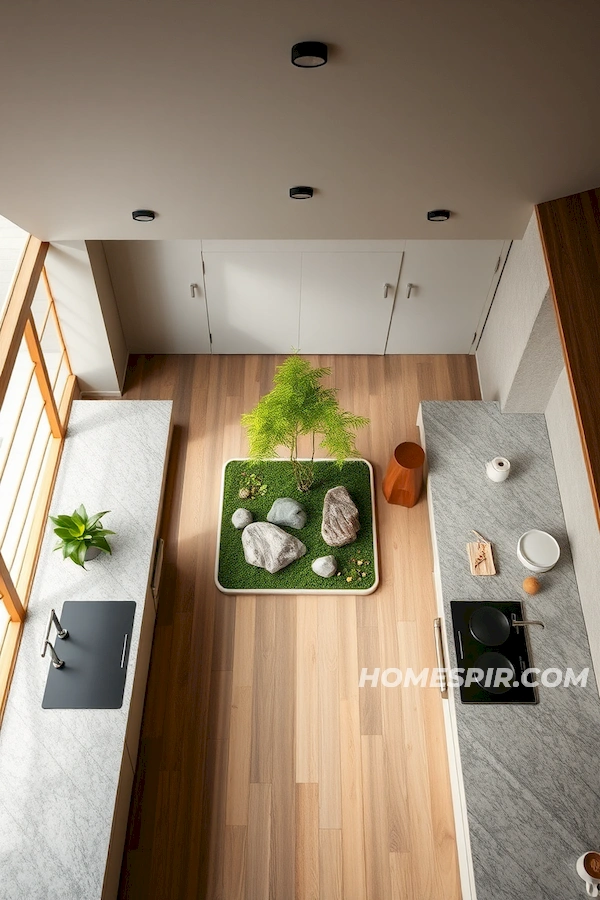
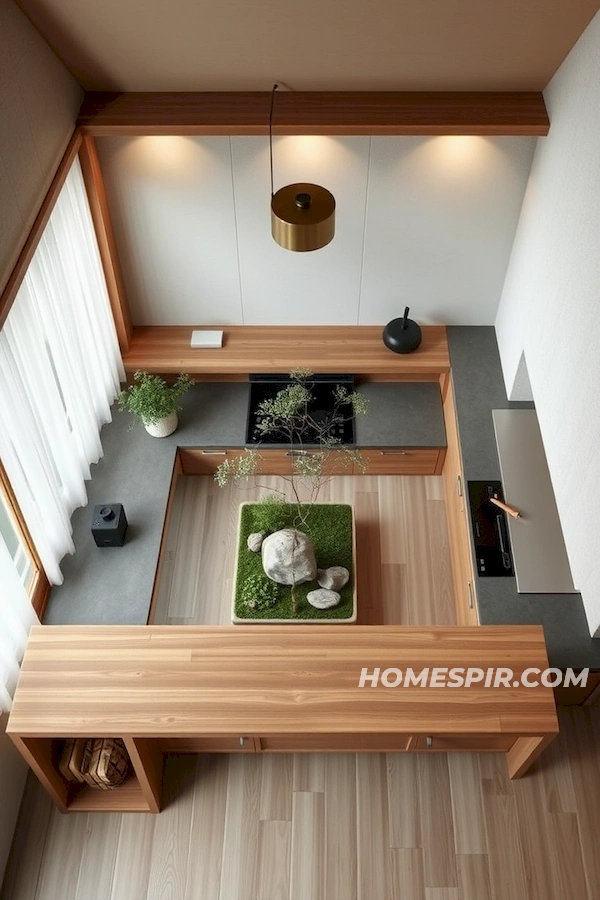
Shoji Illumination
Soft, natural light filtering through traditional shoji screens is a hallmark of Japanese design. This ingenious feature blurs the lines between indoor and outdoor spaces, inviting serenity into your culinary haven. The gentle glow not only enhances the aesthetic appeal but also creates a warm and inviting atmosphere that’s perfect for any home chef looking to inspire their creativity.

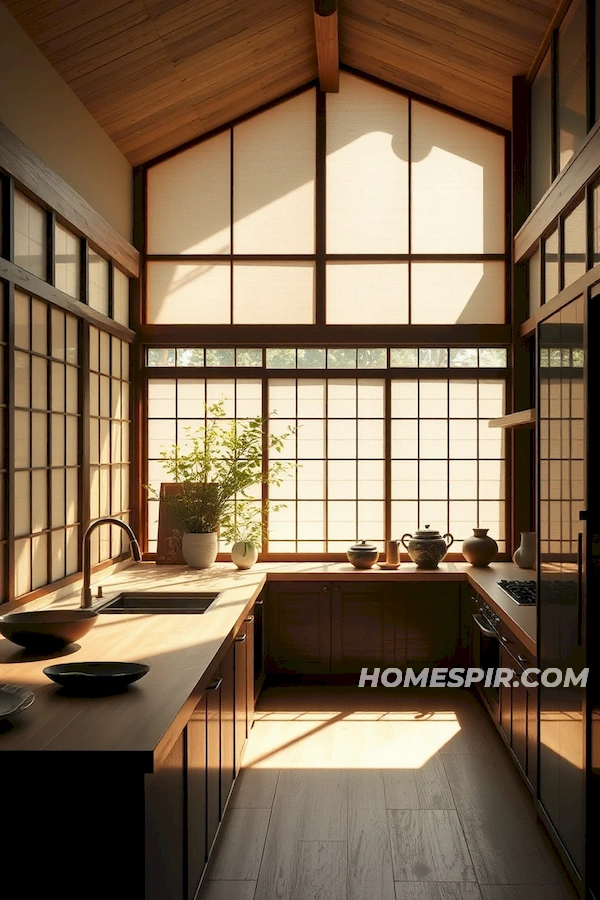
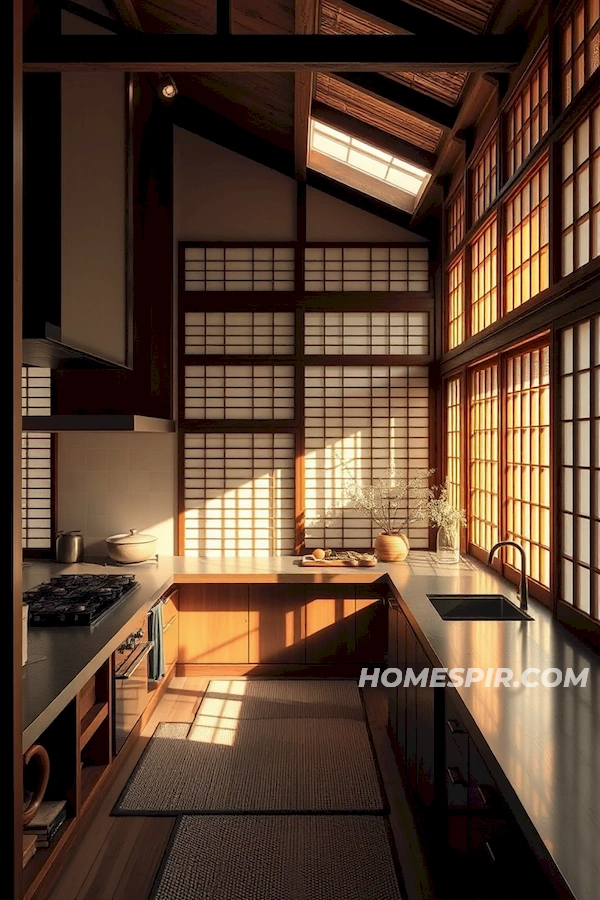
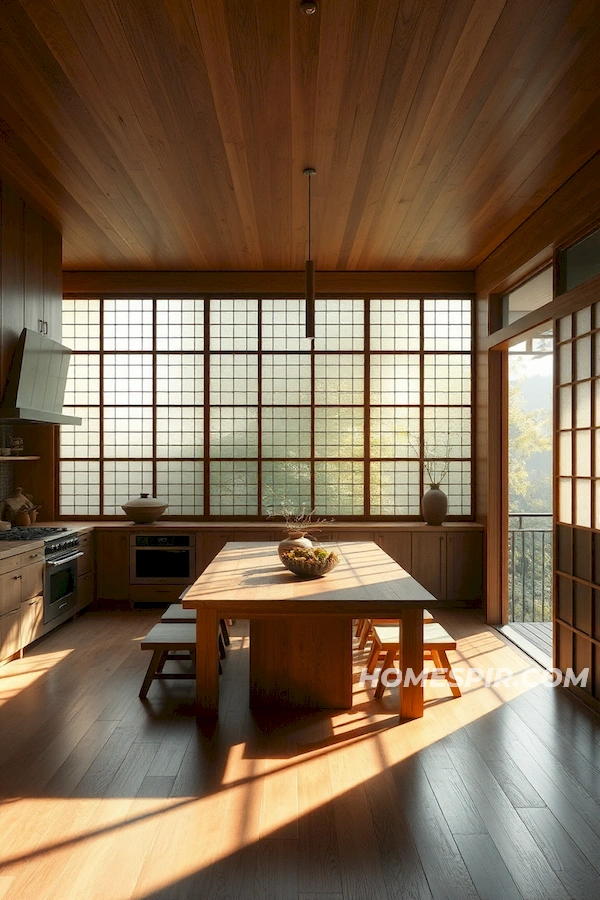
Harmony of Elements
Incorporate the four essential elements water, fire, wood, and earth into your kitchen design for a cohesive look that celebrates natural symmetry and balance. Think stone washbasins, sleek stoves, wooden cabinetry, and earthy pottery. These elements work in concert to craft a visually stunning and highly functional space that upholds the essence of a Japanese kitchen.
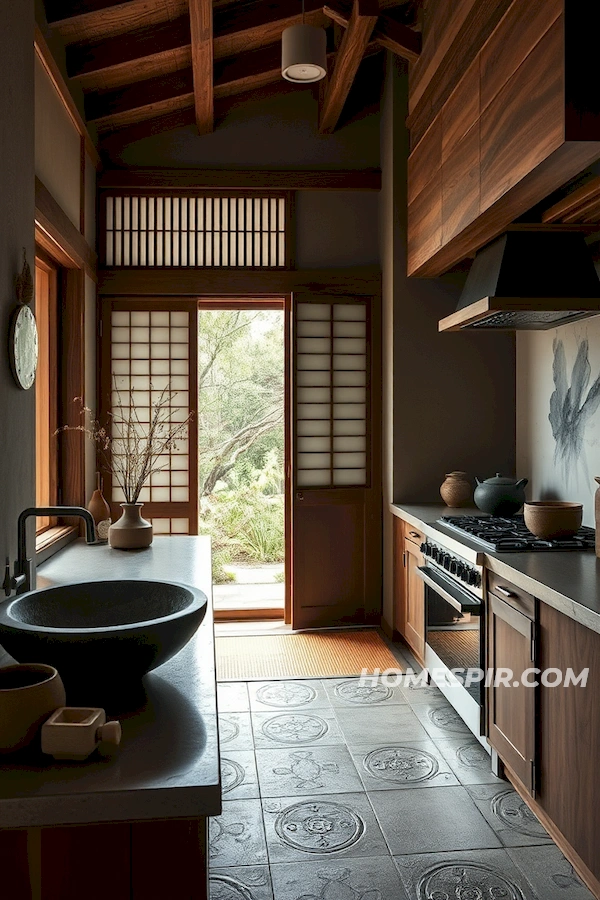
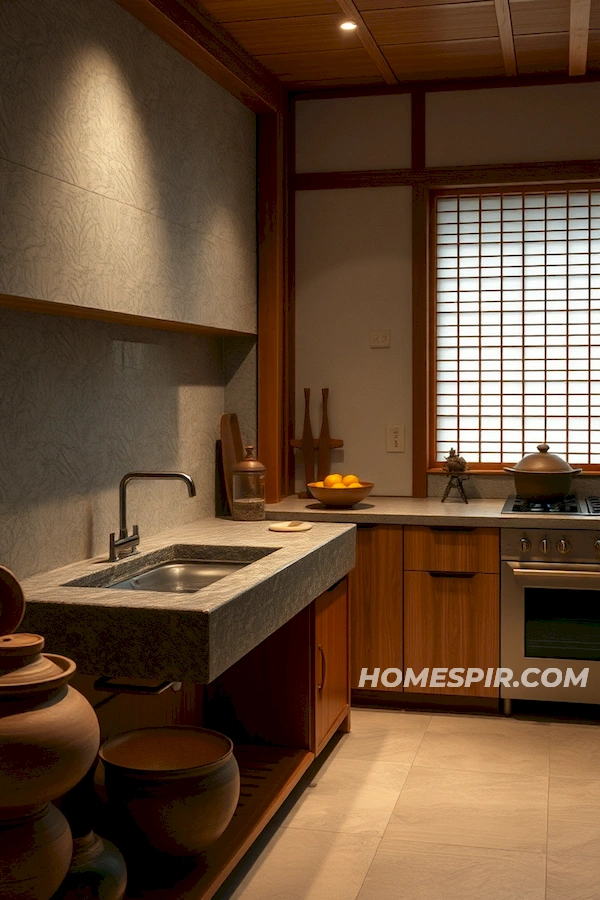
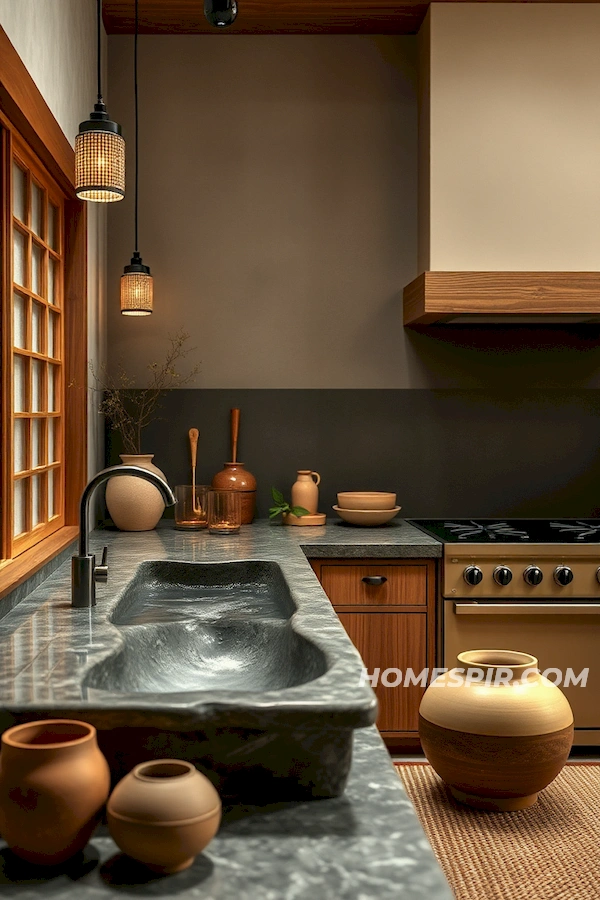
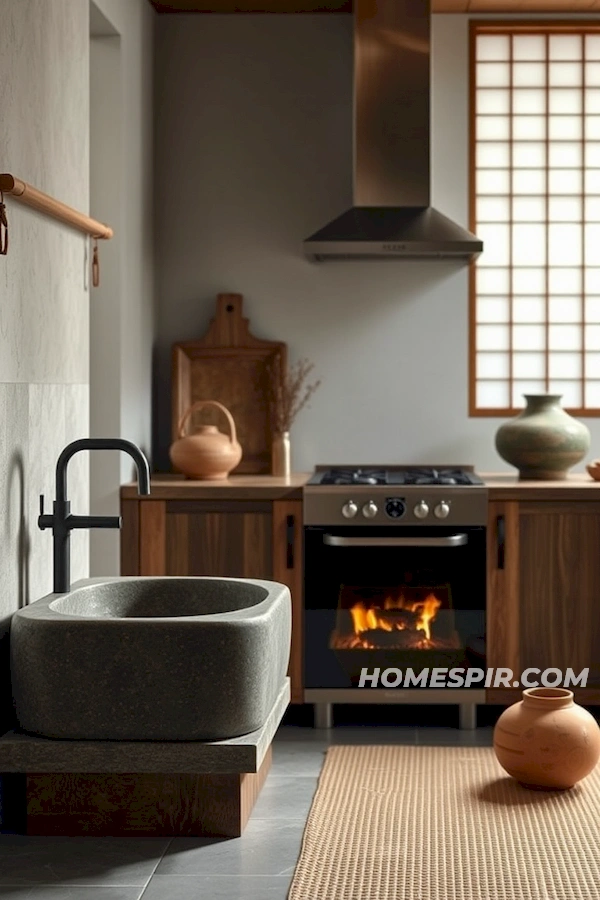
Minimalist Elegance
Modern Japanese kitchens are known for their minimalist elegance, characterized by clean lines and monochromatic color schemes. Open shelving provides a functional and aesthetic space to display your favorite kitchen accessories, enhancing the room’s simplicity without sacrificing practicality. This design technique ensures a clutter-free environment that effortlessly exudes sophistication and clarity.
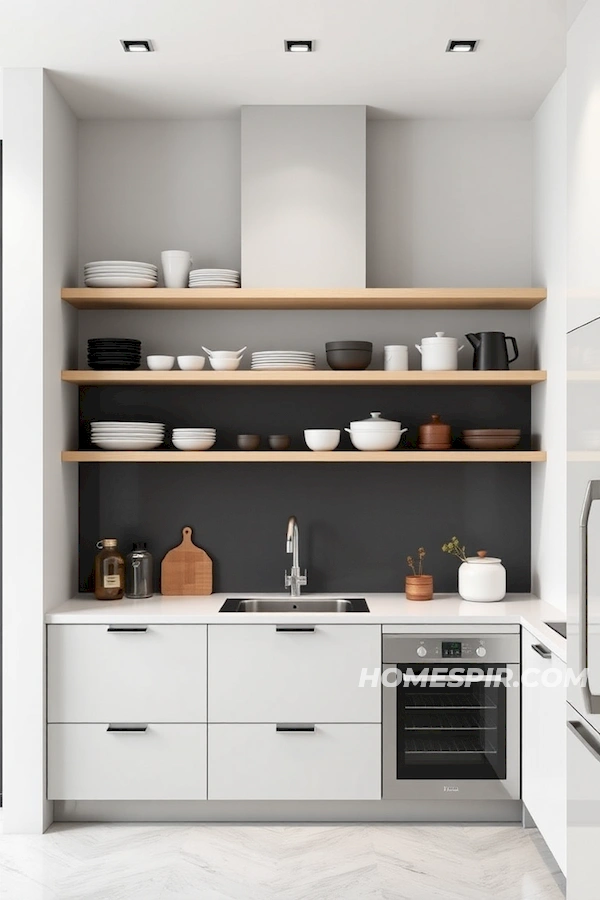
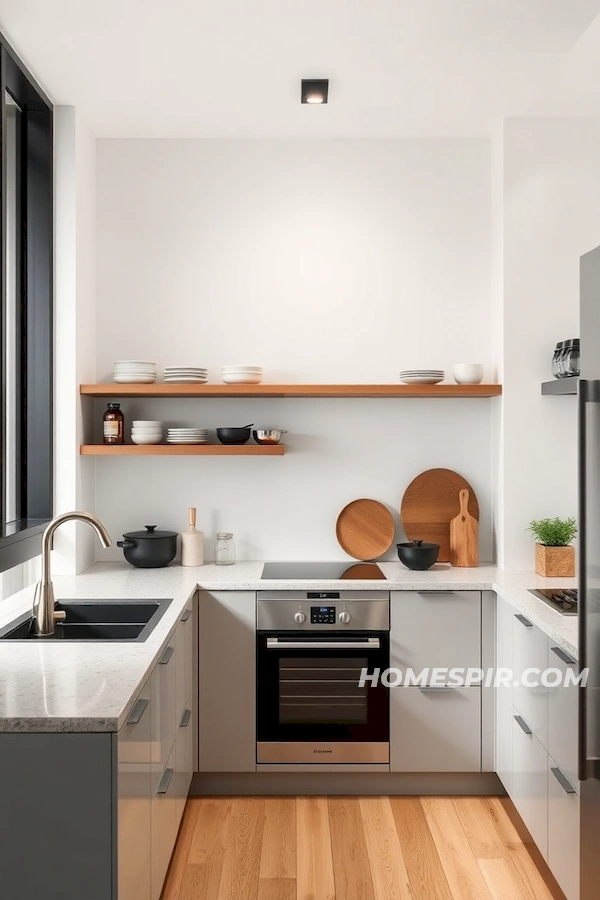
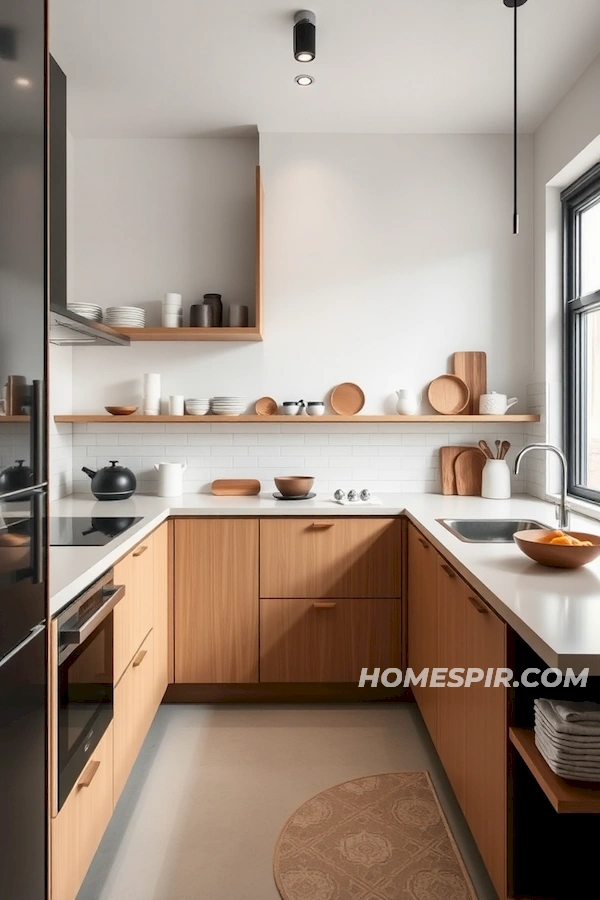
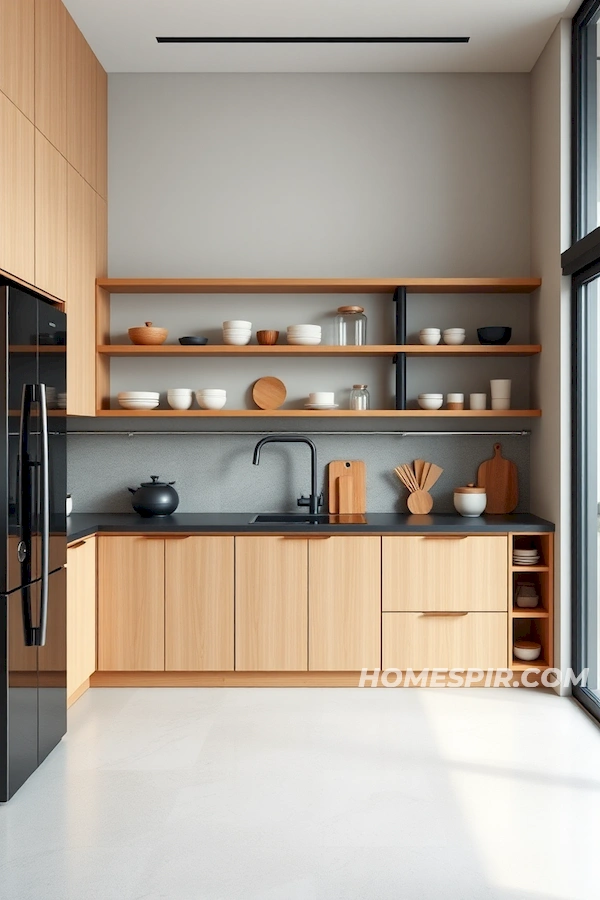
Tatami Texture
Fuse traditional and modern styles by incorporating tatami mat textures in your kitchen flooring and accents. This unique blend contrasts the historic elegance of tatami with sleek, contemporary kitchen appliances, creating a dynamic design that is both familiar and novel. It’s a beautiful balance between old and new that adds character and depth to your culinary space.
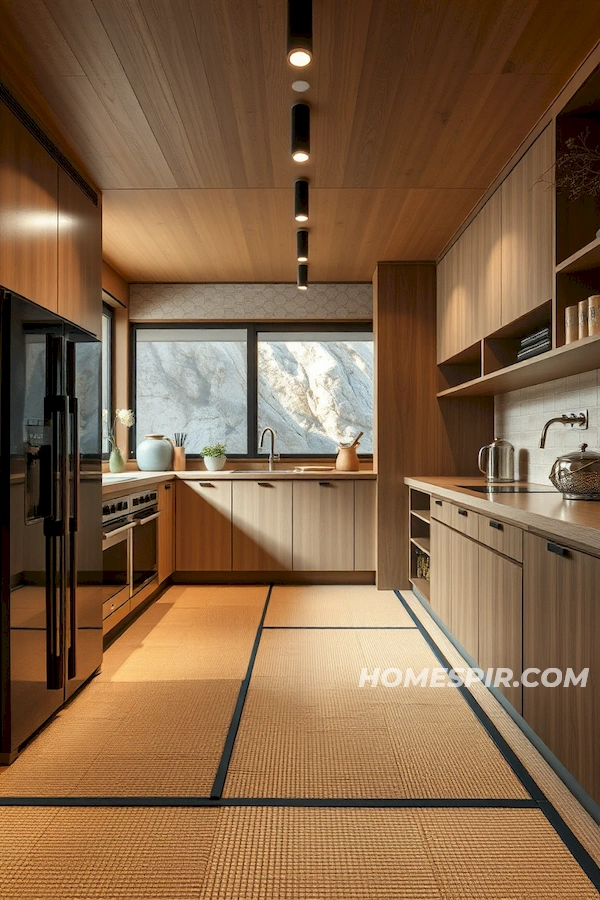
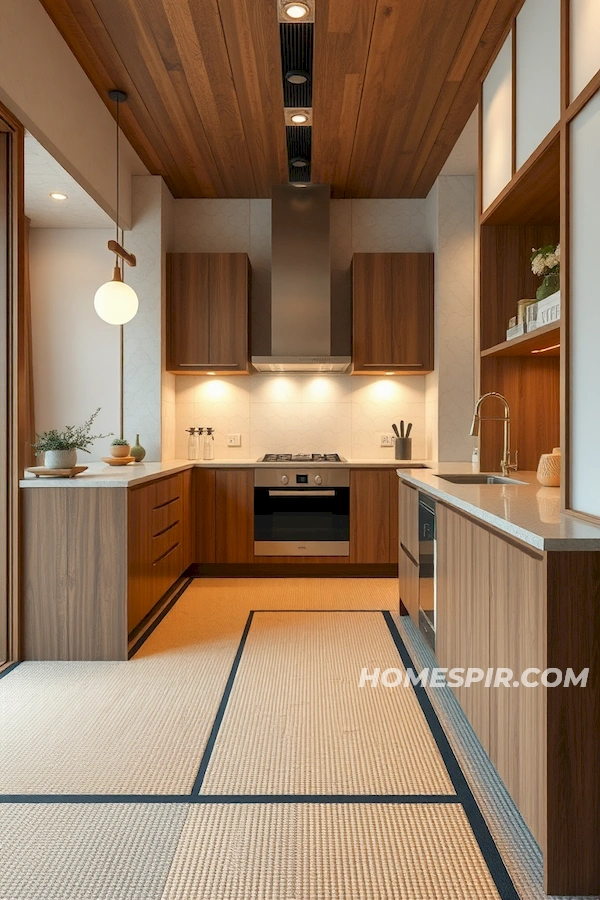
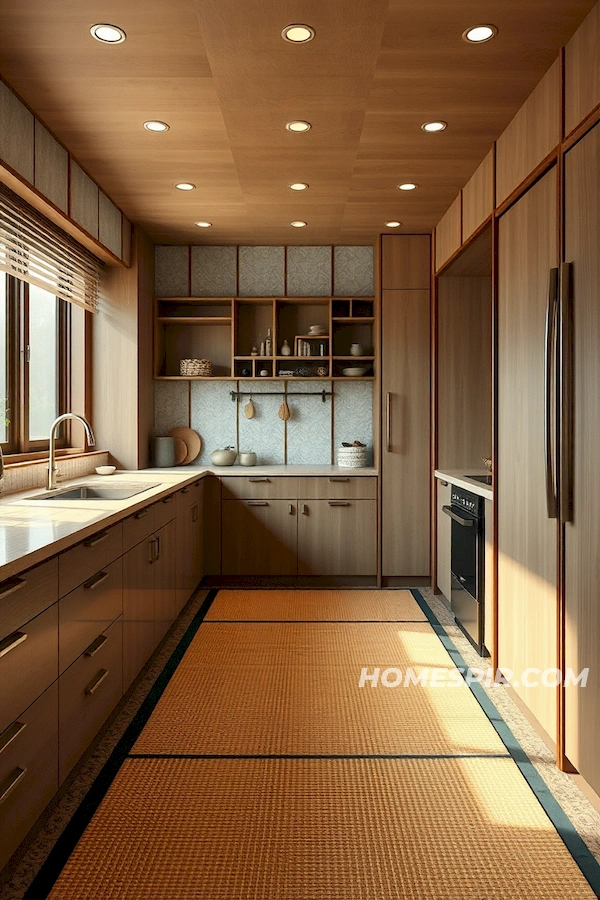
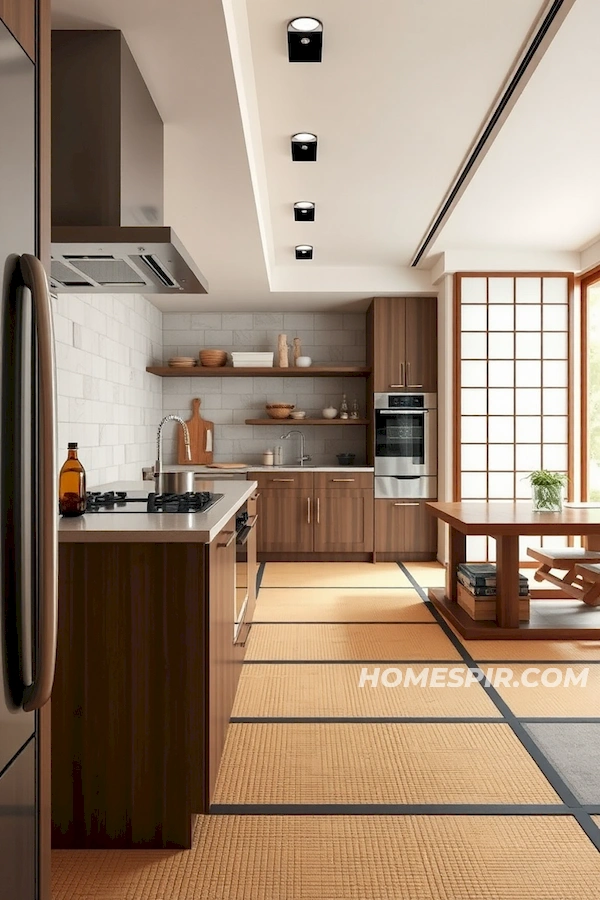
Nature’s Palette
Drawing inspiration from nature is central to Japanese kitchen design. Focus on integrating hues of green from bamboo, warm woods, and neutral stones into your color palette. This approach creates an organic environment that is not only pleasing to the eye but also soothing for the soul, ensuring your kitchen remains a natural extension of the world outside.
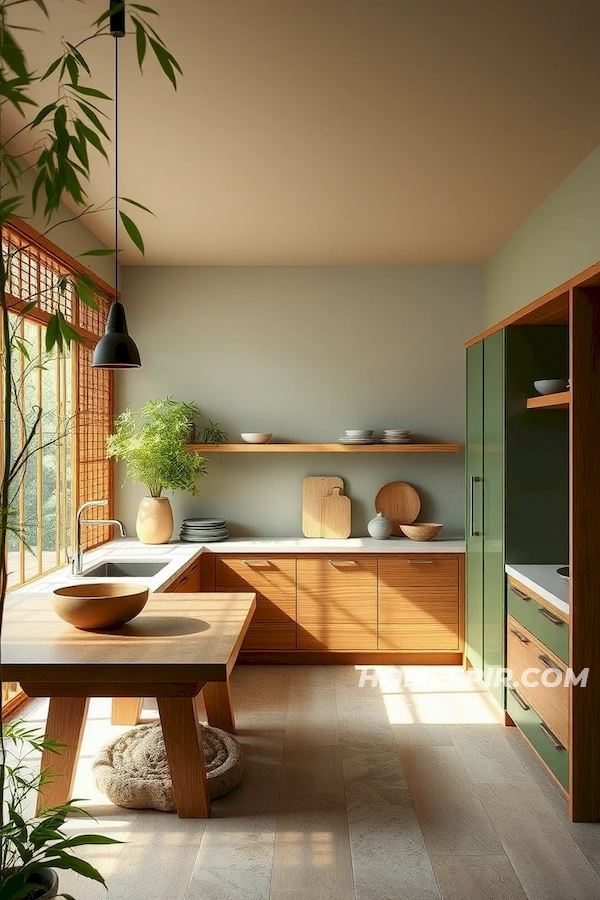
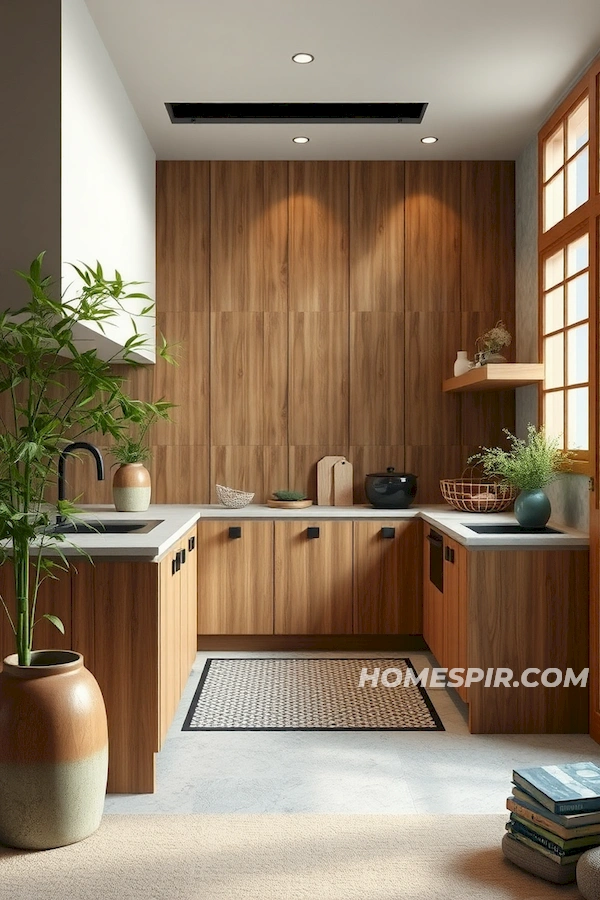
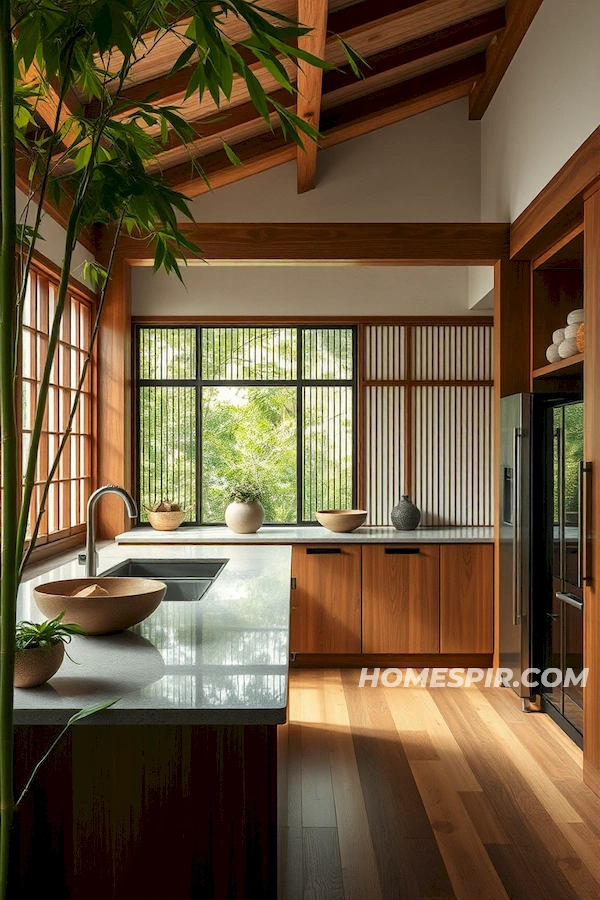
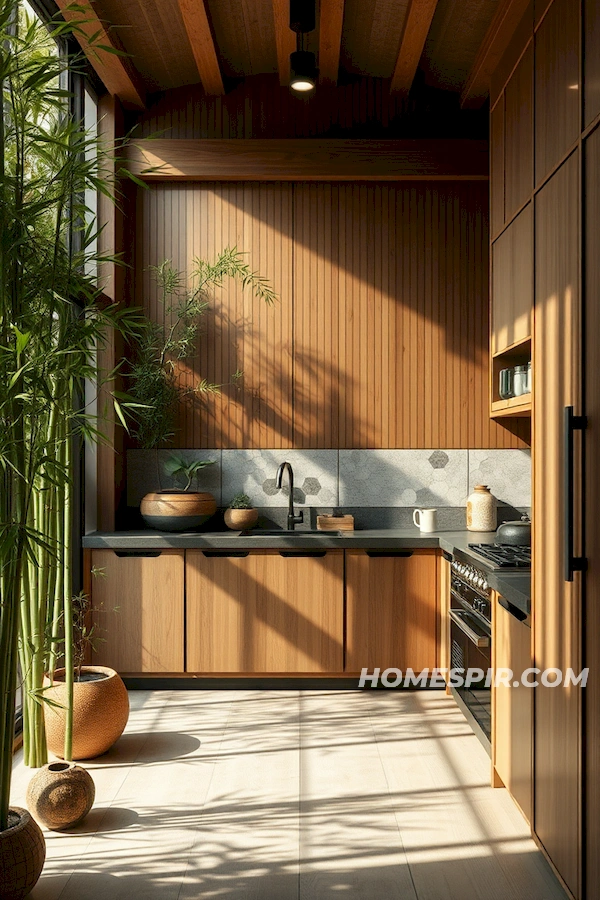
Floating Storage Solutions
Smart storage solutions are key to the efficiency of a Japanese kitchen. Floating shelves and cabinets offer an airy alternative to traditional cabinetry, maximizing space without sacrificing style. This innovative approach enhances both the practicality and aesthetic value of your kitchen, making everyday cooking a breeze while maintaining a clutter-free environment.
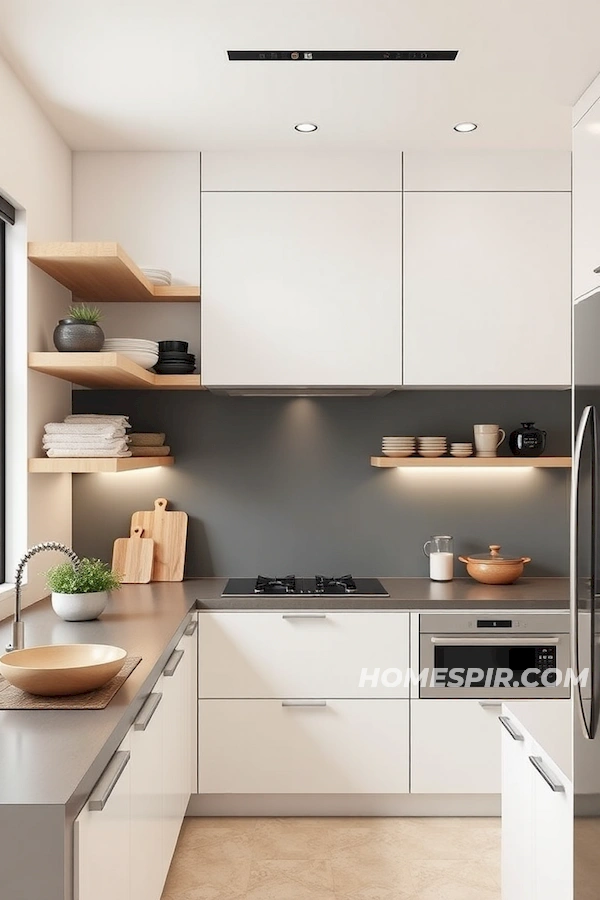
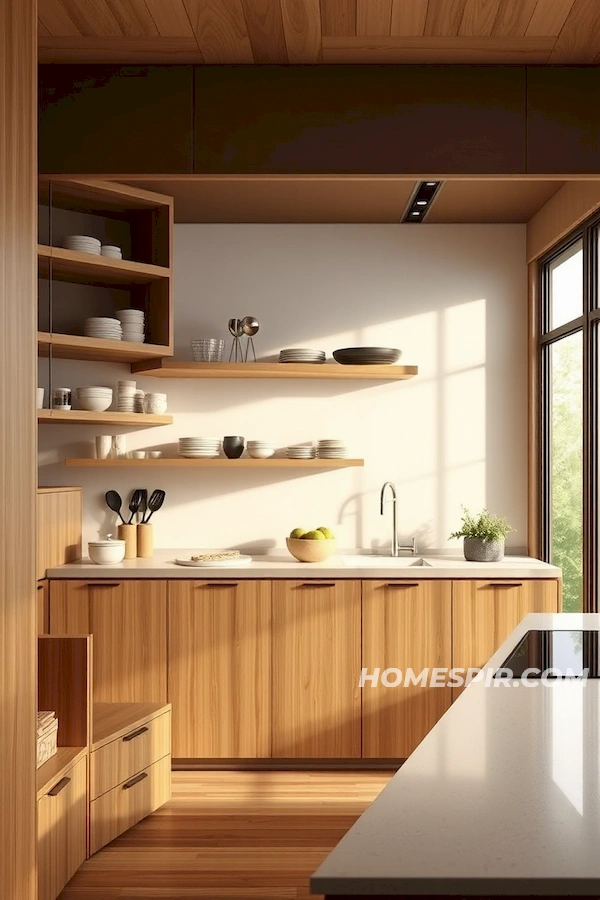
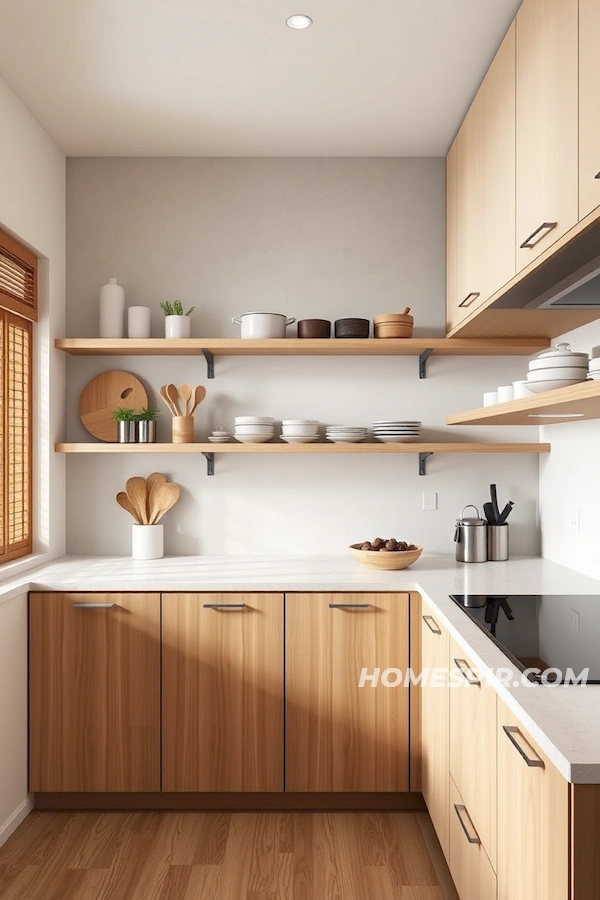
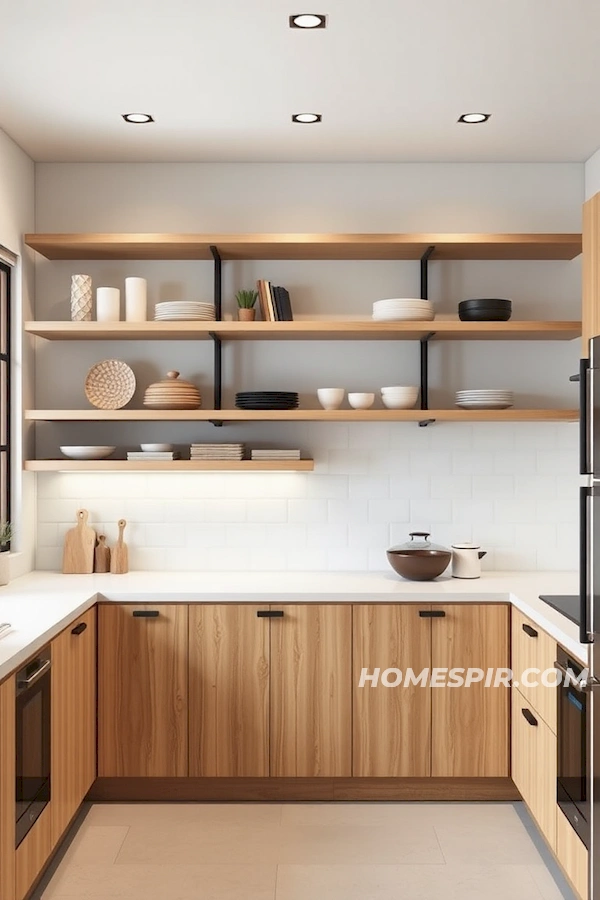
Teahouse Tranquility
Experience the serenity of a traditional Japanese teahouse in your kitchen with low seating arrangements and a dedicated area for tea preparation. This design fosters an intimate setting, encouraging you to enjoy the process of meal preparation. It’s more than just a kitchen; it’s a space where the art of living and culinary excellence converge peacefully.

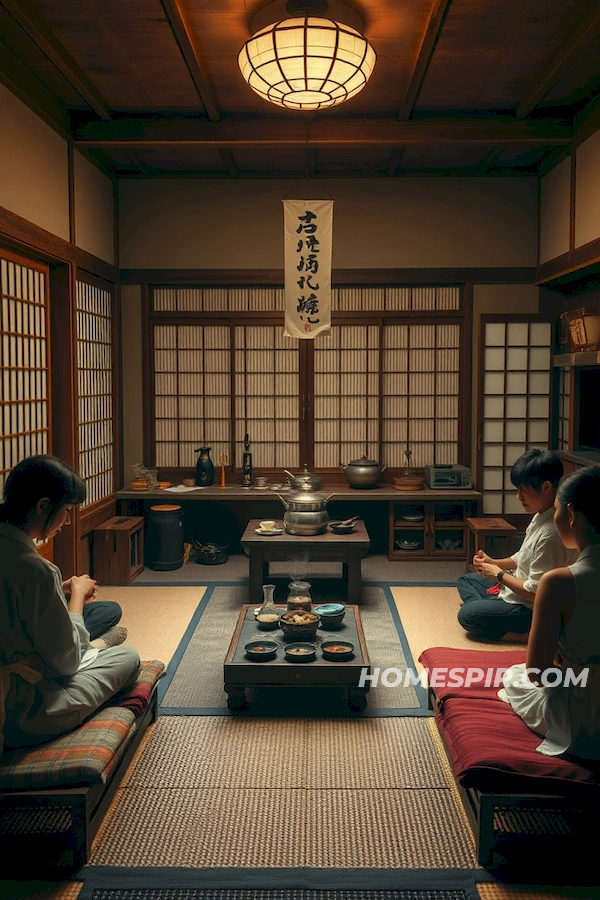
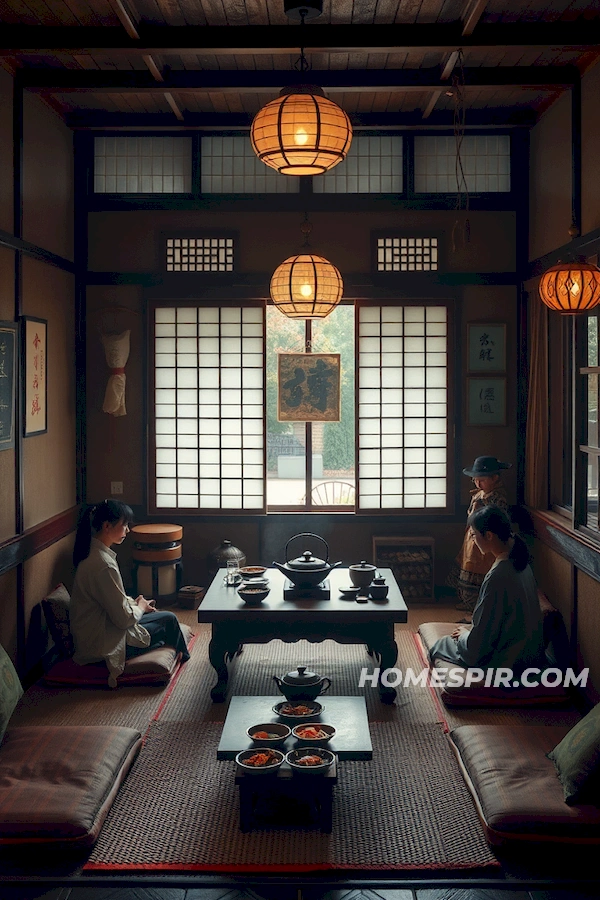
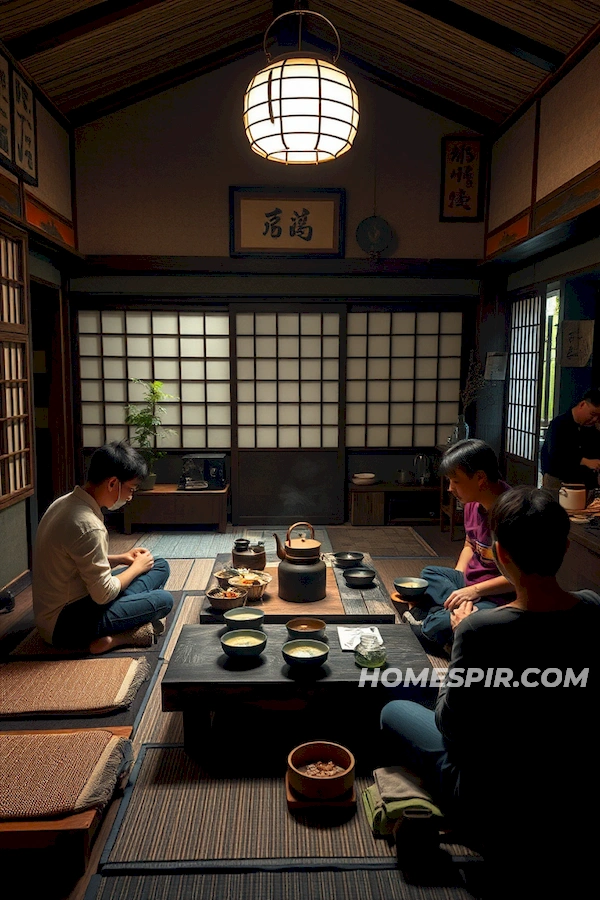
Ready to transform your kitchen into a serene sanctuary of Japanese design? Embrace these principles of balance, simplicity, and functionality to create a space that calms the mind and nourishes the soul. Explore more unique ideas and tips on Homespir for your home transformations!






